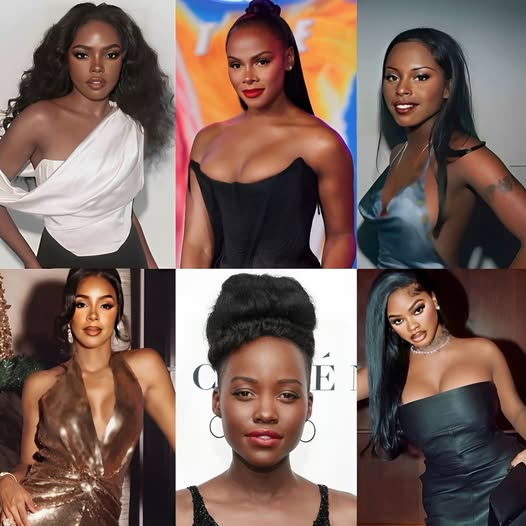
Black aesthetics represent more than just a visual style; they embody a rich, multifaceted cultural identity, and an expression of history, resilience, and beauty. Rooted in the diverse cultures and experiences of Black people worldwide, Black aesthetics encompass art, fashion, music, literature, and much more. From the vibrant and bold colors used in African-inspired fashion to the evocative poetry of Black writers and the unique rhythms of Black music, these aesthetics are an ever-evolving reflection of the global Black experience.
A Rich Cultural Foundation
Black aesthetics draw heavily from the history and cultural heritage of the African diaspora. It is a celebration of African traditions, art forms, and customs that have been passed down through generations, often blending elements from various African nations and traditions. Whether through the vibrant prints of kente cloth, the beat of African drums, or the powerful movements of traditional dance, Black aesthetics are deeply rooted in ancestral pride.
These cultural elements have been expressed not only in Africa but across the world, especially as Black communities migrated, bringing their rich cultures with them. Black aesthetics have become a tapestry of stories, blending influences from African, Caribbean, Latin American, and American cultures to form a diverse and ever-expanding visual language.
Black Fashion: A Form of Expression
One of the most recognizable aspects of Black aesthetics is fashion. From the bold, statement-making styles of the Harlem Renaissance to today’s vibrant streetwear, Black fashion has always been about self-expression and rebellion against the mainstream. Designers like Dapper Dan, Virgil Abloh, and Kerby Jean-Raymond have brought Black aesthetics into the global spotlight, infusing their designs with elements that speak to the cultural experiences of Black people.
Afrocentric styles, such as the Afro hairstyle, headwraps, bold prints, and colorful jewelry, have become iconic symbols of Black pride and cultural awareness. Fashion for Black people is not just about looking good—it’s about telling a story, reclaiming narratives, and asserting one’s identity in a world that has often sought to erase or marginalize Black voices.
Black Music: The Soundtrack of Resistance
When it comes to music, Black aesthetics have been the foundation for many genres that dominate the global music scene today. Whether it’s the soulful sound of Motown, the rebellious spirit of hip-hop, the rhythm of jazz, or the emotional depth of R&B, Black music continues to inspire and shape global culture. Artists like Aretha Franklin, Nina Simone, Tupac Shakur, Beyoncé, and Kendrick Lamar have used their platforms to push social boundaries and advocate for Black liberation and empowerment.
The aesthetic of Black music lies in its authenticity, innovation, and the emotion poured into every note. It represents a form of storytelling that reflects the triumphs and struggles of Black communities. The musical aesthetics of Black artists often highlight themes of resilience, joy, pain, and identity, resonating deeply with listeners around the world.
Art and Literature: Visualizing Black Narratives
The arts have long been a place where Black people can tell their stories, reclaim their history, and challenge stereotypes. In visual arts, movements such as the Harlem Renaissance, which featured prominent artists like Jacob Lawrence and Aaron Douglas, brought Black life and experiences to the forefront of American art. Today, artists like Kehinde Wiley and Kara Walker continue to create art that redefines Black identity, representing Black figures in positions of power and importance.
In literature, authors like Zora Neale Hurston, James Baldwin, and Maya Angelou have used their voices to shape the narrative of Black life and experience. The aesthetic of Black literature is found in its use of language that reflects the beauty and complexity of Black life, highlighting themes of struggle, strength, love, and the pursuit of justice. Contemporary writers like Ta-Nehisi Coates and Chimamanda Ngozi Adichie continue to carry this legacy, offering new perspectives on what it means to be Black in today’s world.
Black Aesthetics in Pop Culture
Pop culture has played a significant role in bringing Black aesthetics to the mainstream, allowing for a broader appreciation of the cultural contributions of Black people. From movies like Black Panther, which showcased African heritage through the lens of futuristic technology and royal imagery, to the music videos of artists like Missy Elliott, whose visual aesthetics have always been bold and innovative, Black culture has consistently shaped global entertainment.
In the 21st century, social media platforms have allowed Black creators to further define and showcase Black aesthetics. Influencers, artists, and musicians can now share their stories and visions with the world, creating a global platform where Black culture can thrive and be celebrated in all its forms.
The Power of Representation
The beauty of Black aesthetics lies not just in their visual impact, but in their power to affirm identity, culture, and heritage. In a world that often tries to box Black people into narrow definitions, Black aesthetics have been a way to reclaim power, to celebrate individuality, and to create spaces for cultural expression.
As the world continues to recognize and embrace diversity, Black aesthetics remain at the forefront of conversations about culture, art, fashion, and music. They serve as a reminder that beauty, creativity, and self-expression are not confined to one culture or aesthetic—Black people have always been, and will continue to be, leaders in shaping the world around them.
Black aesthetics are not just a trend—they are a reflection of the beauty, strength, and resilience of Black culture. Whether through fashion, music, art, or literature, Black aesthetics offer a powerful reminder of the importance of embracing one’s identity and celebrating the diverse tapestry of the human experience. ❤️


